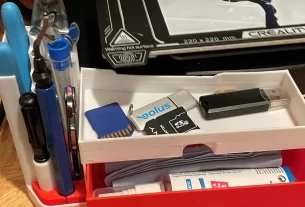If you’re working in the electrical industry, safety should always be your top priority. When it comes to working with high-voltage equipment, using the right tools is crucial. That’s where 1000V insulated tools come into play.
In this comprehensive guide, we’ll dive deep into everything you need to know about 1000V insulated tools. From their benefits to how they work and the best practices for using them, you’ll find all the information you need to stay safe while on the job.
What Are 1000V Insulated Tools?
1000V insulated tools are specially designed tools used in electrical work that provide added protection against electric shock. These tools have a layer of insulation covering the metal parts of the tool, preventing any electrical current from flowing through them and causing harm.
These tools are commonly used in industrial facilities, construction sites, and other settings where high voltage equipment is present. They are essential for protecting workers from electrocution and other electrical hazards.
Benefits of Using 1000V Insulated Tools
Using 1000V insulated tools comes with several benefits, including:
1. Increased Safety: The primary benefit of using these tools is increased safety. They provide an extra layer of protection against electric shock, reducing the risk of injury or death.
2. Compliance with Regulations: In many industries, using 1000V insulated tools is required by law. By using these tools, you can ensure compliance with regulations and avoid potential fines or legal issues.
3. Improved Efficiency: Insulated tools often have ergonomic designs that make them easier and more comfortable to use. This can help improve efficiency and productivity on the job site.
How Do 1000V Insulated Tools Work?
The insulation on 1000V insulated tools works by preventing electricity from flowing through the metal parts of the tool and into the user’s body. The insulation is made from materials like rubber, plastic, or composite materials that have high resistance to electrical current.
When a worker uses an insulated tool, they are protected because the electrical current cannot pass through the insulation and into their body. This layer of protection is essential when working with high voltage equipment, which can be deadly if not handled properly.
Types of 1000V Insulated Tools
There are several types of 1000V insulated tools available for use in electrical work. Some of the most common types include:
1. Pliers: Insulated pliers come in various shapes and sizes and are used for gripping and cutting wires.
2. Screwdrivers: Insulated screwdrivers come in flathead and Phillips head styles and are used for turning screws in electrical equipment.
3. Wrenches: Insulated wrenches are used for tightening or loosening nuts on electrical equipment.
4. Sockets: Insulated sockets are used with ratchets or torque wrenches to tighten or loosen bolts on electrical equipment.
5. Cutters: Insulated cutters are used for cutting wires, cables, and other materials in electrical work.
Best Practices for Using 1000V Insulated Tools
Using 1000V insulated tools is essential for safety when working with high voltage equipment. However, it’s important to follow best practices to ensure maximum protection. Here are some tips for using these tools safely:
1. Always inspect your tools before use to make sure there are no cracks or damage to the insulation.
2. Use the right tool for the job to prevent damage to the tool or injury to yourself.
3. Store insulated tools separately from non-insulated tools to avoid accidentally using the wrong tool.
4. Never modify or alter your insulated tools as this can compromise their safety features.
5. Keep a safe distance from live electrical components while using your insulated tools.
6. Wear proper personal protective equipment (PPE), including gloves, goggles, and other safety gear.
7. Attend regular training sessions on how to use insulated tools safely to stay up-to-date on best practices and regulations.
Conclusion
1000V insulated tools are essential for electrical workers who want to stay safe on the job. By using these tools correctly and following best practices, you can reduce your risk of injury or death from electrical shock.
Remember to always inspect your tools before use, use the right tool for the job, store them separately from non-insulated tools, never modify them, keep a safe distance from live electrical components, wear PPE, and attend regular training sessions.
For more information on 1000V insulated tools and their benefits, check out the Wikipedia page on Insulated Tools. You can also find additional resources and information on electrical safety by visiting OSHA.gov or NFPA.org. Stay safe out there!




